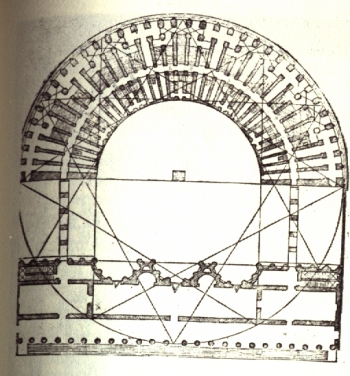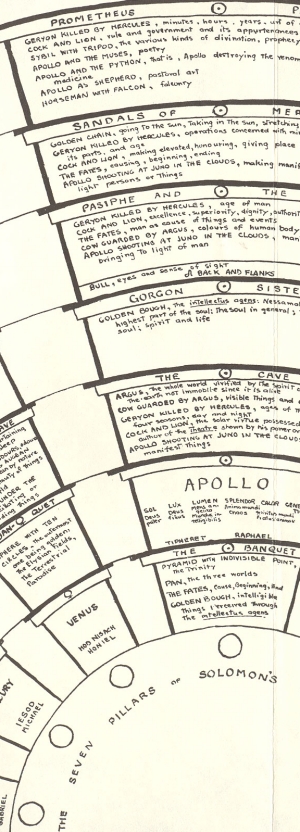Abracadabra: Language, Memory, Representation
The Memory Theater of Giulio Camillo
There are several things to note about Camillo's theatre:
- It is based on a Vitruvian theatre, known as a classical
example of harmony of form.

- It is explicitly referred to as a Memory system of the traditional kind, but breaks all kinds of rules.
- It reverses the purpose of a theater: the spectator stands on stage and views the seats. An odd choice, since a theater is a repetitive space.
- Several images are repeated, but their position is changed to mean something else. The same image can stand for several things
- It was a real space: a small wooden theatre, with manuscripts and notes stuffed in the various seats. Is this still memory in the classical rhetorical sense?
- Why did Camillo insist on building a memory system? Especially a permanent memory system?
- A question Yates does not address: was this theatre intended to be used by anyone? If so, it is the first attempt to generalize a memory system, and to use it to store up ancient learning in an accessible form separate from books.
There is no doubt that Camillo is bit of a wacko. Nonetheless, his fame at the time was not due to his madness, but to the grandeur of his ambition. The renewal of interest in him (see the the Matussek article) has much to do with the fact that Camillo represents an alternative to a linearly ordered encyclopedia-- a project that would become the central goal of the 18th century French philosophes. Rather it was a kind of Random Access encyclopedia, ordered according to principles that were obscure, but not arbitrary. It's similarity with modern visions of hypertext (especially Vannevar Bush's Memex and Ted Nelson's Xanadu) are striking, but the content of his theater has been ignored.
What's in the Memory Theatre?
Camillo mixes an extraordinary variety of images in the Memory Theatre. There are Greek mythological figures, images from Homer and Hesiod, from the Old testament, the gospels of St. John and the standard theological images of the trinity and the spirit. In addition, there are the images drawn from the Jewish Kabbala and the Hermetic corpus. This audacious mixture of images might have been not only an attempt to remember everything, but a kind of research into the connections and similarities.
